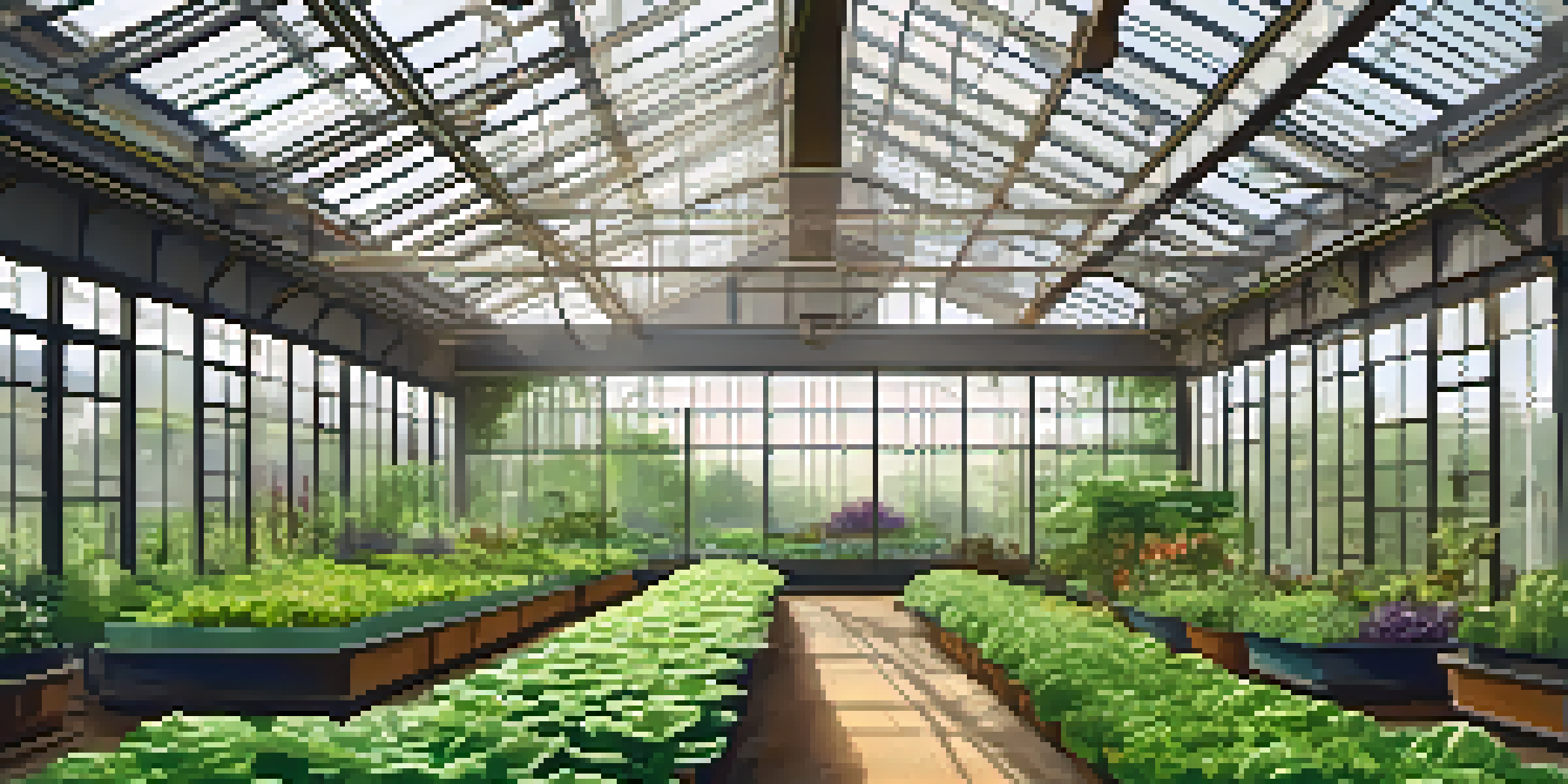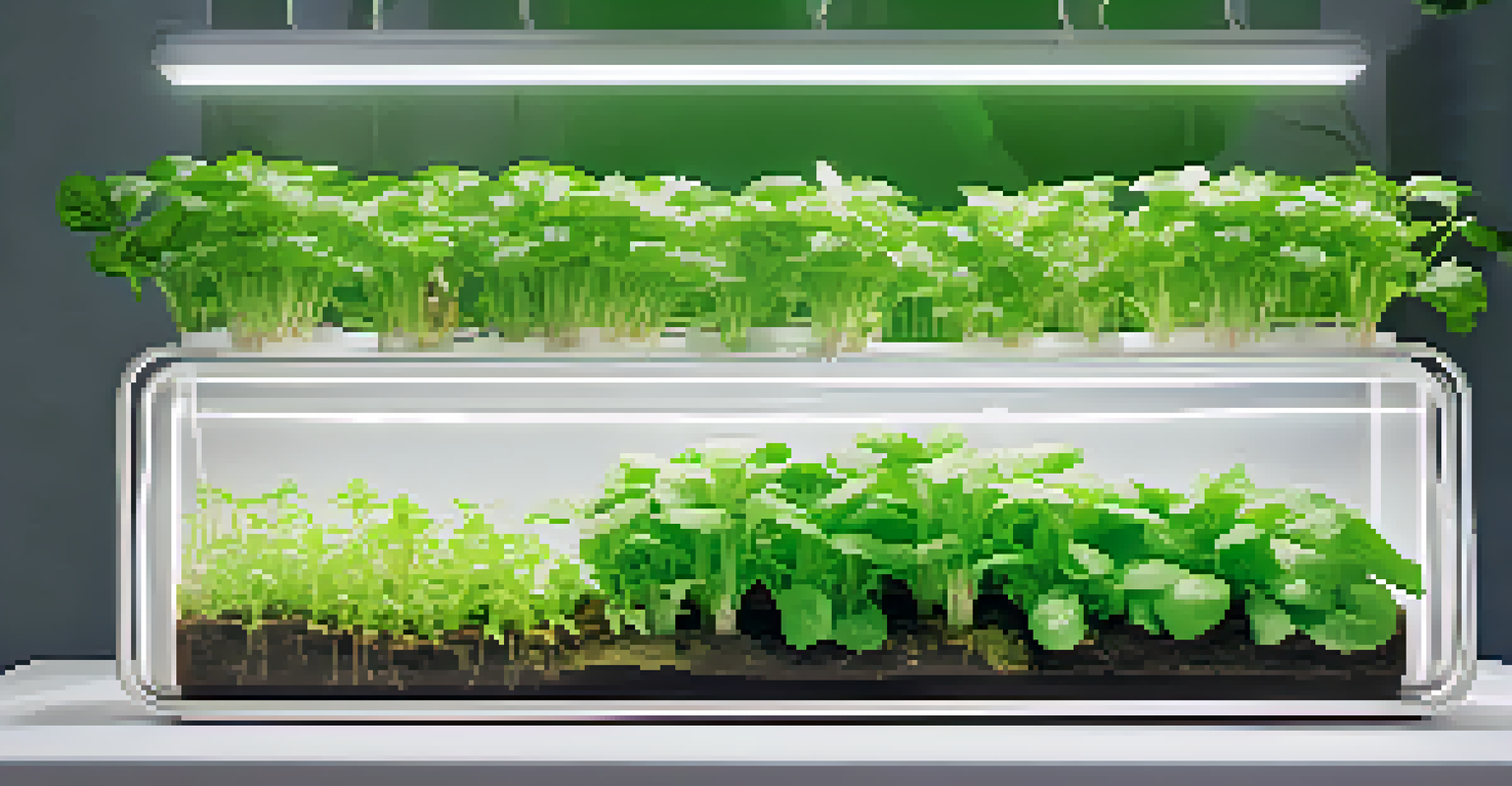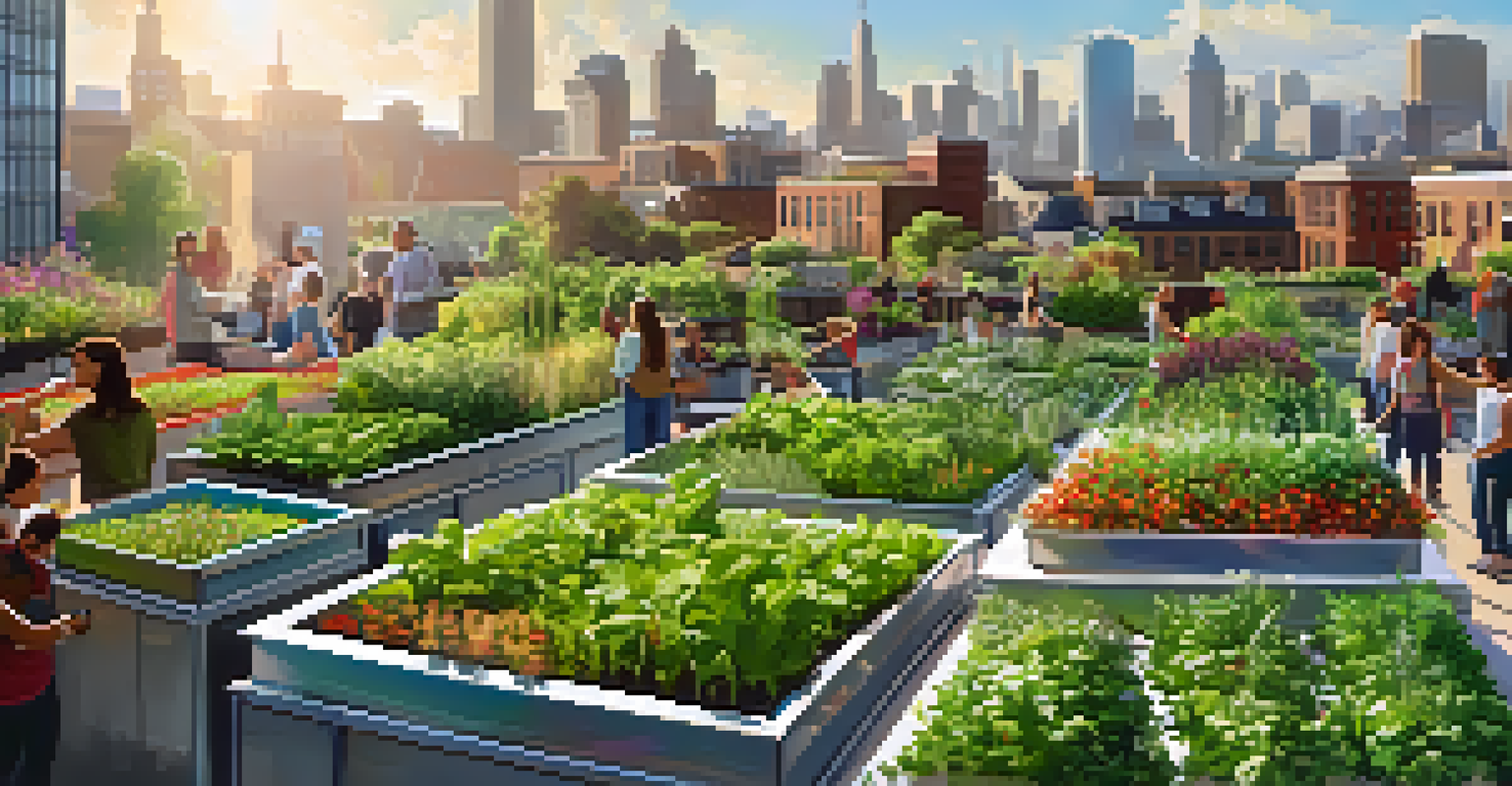Hydroponics: Soil-Free Solutions for Sustainable Crop Growth

What is Hydroponics and How Does It Work?
Hydroponics is a method of growing plants without soil, using nutrient-rich water instead. This technique allows plants to absorb essential nutrients directly through their roots, promoting faster growth and higher yields. By eliminating soil, hydroponics reduces the risk of pests and diseases that often plague traditional farming.
The future of food production is not just in the fields, but also in our cities, where innovative methods like hydroponics can transform urban landscapes.
In hydroponic systems, plants are anchored in an inert medium like clay pellets or rock wool, which provides stability. The nutrient solution is delivered directly to the roots, ensuring that plants receive exactly what they need. This method can be adapted to various scales, from home gardens to large commercial farms.
Overall, hydroponics represents a shift in thinking about agriculture, focusing on water efficiency and space-saving solutions. As urban areas expand and arable land decreases, hydroponics offers a promising alternative to traditional farming.
The Benefits of Soil-Free Farming
One of the most significant benefits of hydroponics is its ability to conserve water. Traditional farming can use up to 70% more water due to evaporation and runoff, while hydroponic systems recycle water, reducing waste. This efficiency is critical in areas facing water scarcity.

Another advantage is the reduced use of pesticides and herbicides. Since the growing environment is more controlled and less prone to pests, hydroponic farmers often rely on natural solutions, leading to healthier crops. This not only benefits consumers but also the environment.
Hydroponics: Soil-Free Farming
Hydroponics allows plants to grow without soil, using nutrient-rich water for faster growth and higher yields.
Additionally, hydroponics allows for year-round crop production, regardless of seasonal changes. This means consistent availability of fresh produce, contributing to food security, especially in urban settings. Imagine enjoying fresh strawberries in winter—hydroponics makes that possible!
Types of Hydroponic Systems Explained
There are several types of hydroponic systems, each with its unique benefits and setups. Deep water culture (DWC), for example, involves suspending plant roots in a nutrient solution, allowing them to absorb oxygen directly from the water. This method is simple and effective for beginners.
Hydroponics is a revolutionary approach to agriculture that can help us grow food sustainably and efficiently in a world facing serious resource constraints.
Nutrient Film Technique (NFT) is another popular system where a thin film of nutrient solution continuously flows over the roots. This provides oxygenation and prevents root rot, making it ideal for leafy greens and herbs. Imagine a gentle stream nourishing your plants—this is the essence of NFT.
Lastly, aeroponics takes hydroponics a step further by misting the roots with nutrient solution, creating an air-rich environment. This method promotes rapid growth and is often used for high-value crops. Each system has its strengths, allowing growers to choose what works best for their needs.
Challenges of Implementing Hydroponics
While hydroponics offers numerous benefits, it also comes with its challenges. Initial setup costs can be high, especially for commercial operations. Investing in equipment like pumps, lights, and nutrient delivery systems can deter some potential growers.
Additionally, hydroponics requires a good understanding of plant nutrition and water chemistry. Growers must monitor pH levels and nutrient concentrations regularly to ensure optimal growth. This knowledge gap can be a barrier for those new to agriculture.
Water and Pesticide Efficiency
This method conserves water and reduces pesticide use, making it more environmentally friendly and sustainable.
Lastly, hydroponic systems are vulnerable to power outages. Since many hydroponics setups rely on pumps to circulate water, a power failure can threaten plant health. Having backup systems and contingency plans is essential for successful hydroponic farming.
Hydroponics and Sustainability: A Perfect Match
Hydroponics aligns closely with the principles of sustainable agriculture. By using less land and water, it addresses some of the most pressing environmental concerns. This efficiency is crucial as the global population continues to rise, putting pressure on food production systems.
Moreover, hydroponic farms often utilize renewable energy sources, reducing their carbon footprint. Vertical farming, a subset of hydroponics, maximizes space in urban areas, making food production more accessible and reducing transportation emissions.
In this way, hydroponics not only enhances food security but also promotes environmental stewardship. By adopting these practices, we can contribute to a more sustainable future for generations to come.
The Role of Technology in Hydroponics
Technology plays a pivotal role in advancing hydroponic systems. Automated monitoring systems can track nutrient levels, pH, and moisture, ensuring optimal growing conditions. This data-driven approach allows growers to make informed decisions and improve overall yield.
Smart sensors and IoT devices are becoming increasingly popular in hydroponics, enabling remote management of farms. Picture being able to check your plants' health from your smartphone while on vacation—this is the future of farming.
Urban Farming and Future Trends
As urban areas expand, hydroponics is becoming vital for food production, utilizing innovative technologies and community initiatives.
Additionally, advancements in LED lighting technology have made it possible to grow crops indoors with minimal energy consumption. By mimicking natural sunlight, these lights promote photosynthesis, allowing for healthy plant growth regardless of external conditions.
Future Trends in Hydroponics and Urban Farming
As urban populations grow, hydroponics is poised to play a crucial role in food production. Vertical farms, which stack layers of crops in controlled environments, are emerging in cities around the world. This innovative approach not only saves space but also reduces transportation costs and emissions.
The integration of hydroponics with community initiatives is also on the rise. Schools and local organizations are adopting hydroponic gardens to educate people about sustainable practices and provide fresh produce to their communities. It's a wonderful way to connect people with their food sources.

Looking ahead, hydroponics may also benefit from advancements in biotechnology. Genetically modified crops could be designed specifically for hydroponic systems, enhancing growth rates and resistance to pests. The future of hydroponics is bright, and its potential impact on agriculture is immense.